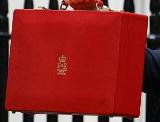 Chancellor of the Exchequer Philip Hammond delivered his third Budget speech yesterday (Monday, October 29, 2018).
Chancellor of the Exchequer Philip Hammond delivered his third Budget speech yesterday (Monday, October 29, 2018).
It was the final Budget prior to the UK leaving the European Union on March 29 next year. However, the Chancellor said that in the event of the UK being unable to secure a Brexit agreement with the European Union, and therefore there being a ‘no-deal’ Brexit, he would hold an emergency Budget.
Below we highlight the Chancellor’s key autumn 2018 Budget measures that will impact on the company car and van sector and the wider motor industry.
Company car benefit-in-kind tax
The Chancellor has delayed announcing company car benefit-in-kind tax changes as a result of introduction of the Worldwide harmonised Light vehicles Test Procedure (WLTP).
Furthermore, Budget papers published immediately after the Chancellor’s Statement did not reveal company car benefit-in-kind tax rates beyond those already published up to the end of 2020/21 (see chart below).
However, the government has said that it will review the impact of WLTP on the company car benefit-in-kind tax regime and Vehicle Excise Duty and will report in spring 2019.
Nevertheless, for cars registered prior to April 6, 2020, HM Revenue and Customs will continue to use the current New European Driving Cycle (NEDC) test procedure for the purposes of collecting company car tax. Similarly, cars first registered prior to April 1, 2020 will maintain their current Vehicle Excise Duty treatment.
As announced at Autumn Budget 2017, the government will legislate in the Finance Bill 2019/20 to confirm that, for the purposes of company car benefit-in-kind tax and Vehicle Excise Duty that the applicable carbon dioxide (CO2) figure for cars will be based upon WLTP.
Company car tax 2018/19 to 2020/21
| % of P11D | 2018/19 | 2019/20 | 2020/21 |
| Price | CO2Â (g/km) | CO2Â (g/km) | CO2Â (g/km)/electric mileage range |
| Â | Â | Â | Â |
| 0 | N/A | N/A | |
| 2 | N/A | N/A | 0-50 (zero emission or 130 miles+) |
| 5 | N/A | N/A | 1-50 (70-129 miles |
| 7 | N/A | N/A | N/A |
| 8 | N/A | N/A | 1-50 (40-69 miles) |
| 9 | N/A | N/A | N/A |
| 10 | N/A | N/A | N/A |
| 11 | N/A | N/A | N/A |
| 12 | N/A | N/A | 1-50 (30-39 miles) |
| 13 | 0-50 | N/A | N/A |
| 14 | N/A | N/A | 1-50 (under 30 miles) |
| 15 | N/A | N/A | 51-54 |
| 16 | 51-75 | 0-50 | 55-59 |
| 17 | N/A | N/A | 60-64 |
| 18 | N/A | N/A | 65-69 |
| 19 | 76-94 | 51-75 | 70-74 |
| 20 | 95-99 | N/A | 75-79 |
| 21 | 100-104 | N/A | 80-84 |
| 22 | 105-109 | 76-94 | 85-89 |
| 23 | 110-114 | 95-99 | 90-94 |
| 24 | 115-119 | 100-104 | 95-99 |
| 25 | 120-124 | 105-109 | 100-104 |
| 26 | 125-129 | 110-114 | 105-109 |
| 27 | 130-134 | 115-119 | 110-114 |
| 28 | 135-139 | 120-124 | 115-119 |
| 29 | 140-144 | 125-129 | 120-124 |
| 30 | 145-149 | 130-134 | 125-129 |
| 31 | 150-154 | 135-139 | 130-134 |
| 32 | 155-159 | 140-144 | 135-139 |
| 33 | 160-164 | 145-149 | 140-144 |
| 34 | 165-169 | 150-154 | 145-149 |
| 35 | 170-174 | 155-159 | 150-154 |
| 36 | 185-189 | 175-179 | 160-164 |
| 37 | 180+ | 165+ | 160+ |
From April 6, 2018 for each tax year add 4% for diesel cars up to a maximum of 37%. Cars that meet the Real Driving Emissions Step 2 (RDE2) standard are exempt.
Capital allowances
A change in capital allowances for business cars with CO2 emissions of more than 110g/km has been announced with the 8% rate cut to 6% backdated to April 1, 2018. Legislation will be introduced in Finance Bill 2018/19 to the special rate of writing down allowance which will be changed from 8% to 6%. The Finance Bill will be published on Wednesday, November 7.
The two other thresholds for capital allowances on cars bought outright remain unchanged and are:
Vehicles up to 50g/km (reduced from 75g/km): Companies can write down the full cost against their taxable profits
Vehicles emitting 51-110g/km: Companies can write down 18% of the cost of the car against their taxable profits each year, on a reducing balance basis
The government will legislate in Finance Bill 2018/19 to extend the first-year allowance for electric charge-points for four years. This will extend such allowances until March 31, 2023 for corporation tax and April 5, 2023 for income tax purposes.
Vehicle Excise Duty
Vehicle Excise Duty rates for cars, vans and motorcycles will increase in line with the Retail Price Index from April 1, 2019 (see tables below). To support the haulage sector, the government will freeze the Heavy Goods Vehicle (HGV) Vehicle Excise for 2019/20.
To incentivise van drivers to make the cleanest choices, the government published a consultation on reforming Vehicle Excise Duty for new vans in the 2018 Spring Statement. Van Vehicle Excise Duty is currently charged at a flat rate, no matter the vehicle’s emissions.
The consultation explored creating a graduated first year rate for new vans, as is already in place for cars.
With the Budget Statement, the Chancellor published a summary of responses from the consultation on Vehicle Excise Duty reform for vans. Based on those responses the government has decided to:
Further develop its understanding of the impacts of WLTP on CO2 emissions for vans, ahead of announcing the new rates and bands, for introduction from April 2021
Ensure the new system takes into account the weight of the van by introducing a two-category approach
Provide ongoing incentives, beyond the first-year, for new zero emission, ultra-low emission and other alternatively fuelled vans from April 2021.
The government will set out its Vehicle Excise Duty bands and rates for vans ahead of Finance Bill 2019/20.
Finally, to align the tax treatment of the transportation of blood and medical supplies by the national charity Blood Bikes with other emergency vehicles, the government will introduce an exemption for the purpose-built vehicles operated by Blood Bikes from April 2020.
The summary of responses is available at:Â https://www.gov.uk/government/publications/budget-2018-documents
Vehicle Excise Duty from April 1, 2019 for cars first registered
| Emissions (g/km) of CO2 |
First year rate petrol cars and RDE2 standard diesel cars |
First Year rate non-RDE2 diesel cars |
Alternative fuel cars |
| 0 | £0 | £0 | £0 |
| 1-50 | £10 | £25 | £0 |
| 51-75 | £25 | £110 | £15 |
| 76-90 | £110 | £130 | £100 |
| 91-100 | £130 | £150 | £120 |
| 101-110 | £150 | £170 | £140 |
| 111-130 | £170 | £210 | £160 |
| 131-150 | £210 | £530 | £200 |
| 151-170 | £530 | £855 | £520 |
| 171-190 | £855 | £1,280 | £845 |
| 191-225 | £1,280 | £1,815 | £1,270 |
| 226-255 | £1,815 | £2,135 | £1,805 |
| Over 255 | £2,135 | £2,135 | £2,125 |
Rates for second tax payment onwards for cars registered after April 1, 2017
| Fuel type | 12 month rate |
| Petrol or diesel | £145 |
| Electric | £0 |
| Alternative fuel | £135 |
Cars with a list price above £40,000 pay a £310 supplement for five years from the second time the vehicle is taxed.
Vehicle Excise Duty from April 1, 2019 for cars registered between March 1, 2001 and March 31, 2017
| VED Band | CO2 emissions (g/km) | Standard rate* |
| A | Up to 100 | £0 |
| B | 101-110 | £20 |
| C | 111-120 | £30 |
| D | 121-130 | £125 |
| E | 131-140 | £145 |
| F | 141-150 | £160 |
| G | 151-165 | £200 |
| H | 166-175 | £235 |
| I | 176-185 | £260 |
| J | 186-200 | £300 |
| K** | 201-225 | £325 |
| L | 226-255 | £555 |
| M | Over 255 | £570 |
*Alternative fuel discount 2019/20 £10 all cars
**Includes cars emitting over 225 g/km registered before March 23, 2006
Vehicle Excise Duty bands and 2019/20 rates for vans registered on or after March 1, 2001
Early Euro 4 and Euro 5 compliant vans – £140
All other vans – £260
Van benefit charge and van and car fuel benefit charge 2019/20
The government will increase the van benefit charge by the Consumer Price Index and the van and car fuel benefit charges by the Retail Price Index from April 6, 2019.
The flat-rate van benefit charge will increase to £3,430 (2018/19: £3,350), the multiplier for the car fuel benefit charge will increase to £24,100 (2018/19: £23,400), and the flat-rate van fuel benefit charge will increase to £655 (2018/19: £633).
The charge for zero-emission vans increased to 40% of the main rate in 2018/19 and will continue to increase on a tapered basis to April 5, 2022 – 60% in 2019/20, 80% in 2020/21, 90% in 2021/22 and then equalising with the standard charge in 2022/23.
The government had previously said that it would review the impact of the zero-emission van incentive at Budget 2018 together with enhanced capital allowances for zero-emission vans. However, there was no mention of either measure in the papers published immediately after the Budget Statement.
Fuel duty
As previously announced by Prime Minister Theresa May in her speech at the Conservative Party Conference in early October 2018, the scheduled rise in fuel duty from April 2019 has been cancelled. It is the ninth consecutive year that there has been no increase.
The government calculates that by April 2020 the fuel duty freeze since 2011 will have saved the average car driver more than £1,000, compared to the pre-2010 escalator, and the average van driver more than £2,500.
Following review, the government will maintain the difference between alternative and main road fuel duty rates until 2032 to support the de-carbonisation of the UK transport sector, subject to review in 2024.
Investment in roads and pothole repairs
The Chancellor confirmed the government’s pre-Budget promise to hypothecate English Vehicle Excise Duty to roads spending, announcing that the National Roads Fund would be £28.8 billion 2020 to 2025.
The Fund, said the Chancellor would provide long-term certainty for roads investment, including the new major roads network and large local major roads schemes, such as the North Devon Link Road.
The Budget also announced the draft Roads Investment Strategy 2, which is claimed to be the largest ever investment in England’s strategic roads and would enable the government to build on the Roads Investment Strategy 1, such as the A1(M) link to Newcastle, and progress transformative projects like the A66 Trans-Pennine, the Oxford‑Cambridge Expressway, and the Lower Thames Crossing.
The government said it expected to spend £25.3 billion on the Strategy, funded by the National Roads Fund, between 2020 and 2025.
The government has allocated £420 million to local authorities in 2018/19 to tackle potholes, repair damaged roads, and invest in keeping bridges open and safe.
To support projects across England that ease congestion on local routes, the government will also make £150 million of Northern Powerhouse Investment Funding available to local authorities for small improvement projects such as roundabouts.
Additionally, to support the Industrial Strategy Future of Mobility Grand Challenge, £90 million from the Northern Powerhouse Investment Funding will be allocated to the Transforming Cities Fund to create Future Mobility Zones. It will trial new transport modes, services, and digital payments and ticketing. £20 million of which will be allocated to the West Midlands.
Annual Investment Allowance
The Annual Investment Allowance will be increased from £200,000 to £1 million for all qualifying investment in plant and machinery made on or after January 1, 2019 until December 31, 2020, to help stimulate business investment.
The measure answers the call from some fleet suppliers who said increasing the Allowance would help van fleets adapt to the introduction of the London Ultra Low Emissions Zone in April 2019.
Fleet suppliers have said that ensuring van fleets were compliant with Ultra-Low Emission Zone entry criteria with charge for vans – Euro6 diesel – was an operational challenge. Therefore, increasing the Allowance to enable fleets to offset the cost of buying new vans from their profits before tax would allow more fleets to buy more new vans and help them with the cost of meeting the requirements of the Ultra-Low Emission Zone.
One supplier said: “For most fleets, buying new vehicles is the cleanest and easiest solution if the funding is available – and the Annual Investment Allowance makes the proposition very attractive as long as you use the right funding method.â€







